The Legend of Zelda Timeline Theories
Confirmed 194,898
Part of a series on The Legend of Zelda. [View Related Entries]
The Legend of Zelda Timeline Theories
Part of a series on The Legend of Zelda. [View Related Entries]

| Navigation |
| About • Origin • Spread • Hyrule Historia • Search Interest • External References • Recent Images • Recent Videos |
About
The Legend of Zelda Timeline Debate refers to several theories surrounding the chronology of the popular Nintendo role-playing game franchise The Legend of Zelda. Due to the complex nature of the storyline over the course of the series, the canonical order of events has been subject to much debate among fans and inspired elaborate theories attempting to unlock the mystery.
Origin
Between the release of The Legend of Zelda[5] in February 1986 and February 2013, Nintendo has released fifteen titles in the main series, five of which were later enhanced and rereleased, and thirteen spin-off games.[6] According to the Zelda Wiki[2], Nintendo's unconventional philosophy of "Gameplay first, story later" served well in the beginning, but the chronology became increasingly complex and incoherent as additional titles were released.

In the early 2000s, Nintendo of America posted a timeline[7] of the games on the official website Zelda.com, which provided a coherent progression of the stories leading up to the 2001 Game Boy titles Oracle of Ages and Oracle of Seasons. However, this official explanation was eventually vetoed by the game's Japanese developers who wanted to keep the timeline open to subjective interpretation of the players.
Spread
Though many theories stuck to simply figuring out the order of the games, many fans attempted to chronicle the history of the Hyrule magical kingdom and the lineage of the characters as well. In the early 2000s, Zelda fan site North Castle[16] launched one of the earliest Hyrulian Timelines as part of its Zelda history project. By 2006, fans on the gaming forum Neoseeker[17] also began discussing timeline theories, resulting in nine pages of debate. Later that year, the Zelda Wiki established a page dedicated to mapping out the canon timelines.[19] In November 2006, GameTrailers[18] released a six-part Zelda retrospective, offering their own spin on the timeline while questioning whether or not Nintendo had a timeline in mind from the start.
Zelda Wiki began a separate theory article[21] in 2008 to encourage more input from the community about the game order. In August 2009, ZeldaTimeline.com[15] launched, chronicling a lengthy timeline based only on the storyline of the Japanese titles. In 2010, another revelation from Nintendo officials appeared in the Official Nintendo Magazine[20], in which game designer Eiji Aonuma confirmed that Skyward Sword took place prior to Ocarina of Time. In the same interview, Aonuma revealed there was a confidential master timeline that could not be made public in case they ever wanted to make a prequel that would take place before the original title's plotline.
In May 2011, IGN released a fan film (shown below) humorously arguing that the trouble with The Legend of Zelda’s timeline was caused by Emmett “Doc” Brown from the Back to the Future series. As of February 2013, there are approximately 500 search results for “Zelda Timeline Theory” on YouTube[25] and dozens of text-based theories on ZeldaWiki.[21]
Criticisms
Some fans have also argued that there is no true timeline for The Legend of Zelda franchise, and that they are simply stock characters used to interpret multiverse stories. Much of this debate was sparked in March 2009, after YouTuber ocarinahero10 (shown below, left) uploaded a video arguing for a split timeline due to time paradoxes. The video was well-received by fans and many encouraged the uploader to send his theory to Nintendo for their opinion. Eight days later, ocarinahero10 uploaded a second video (shown below, right) claiming that Nintendo sent him a response letter referencing a comment Aonuma made after the release of Wind Waker, in which he said that each game features a brand new hero named Link and that there is no definitive timeline. Nintendo’s feedback were highlighted by Destructoid[22], Zelda fan site the Hylia[23] and the Escapist[24] in July 2009, leading to additional debate over this argument’s authenticity.
Hyrule Historia
In December 2011, a 274-page encyclopedic art book titled Hyrule Historia was released in Japan in celebration of the franchise's 25th anniversary. On the day of its release, a user named Vega Kellogg on the Korean video-game website Ruliweb[1][2] claimed that Hyrule Historia contained an official timeline of the game. After a video showing the pages with the timeline was posted on YouTube, it was translated into English and featured on Kotaku.[3]

The official timeline, written by Eiji Aonuma[8], was unveiled to be three split timelines, each starting with Skyward Sword, leading into Minish Cap, Four Swords and Ocarina of Time. After that, the game splits into three paths. The first follows the theory that Link gets sent back in time to relive his childhood after defeating Ganondorf. The games following from this are Majora's Mask, Twilight Princess, and Four Swords Adventure. The second path shows Link continuing his journey as an adult through The Wind Waker, Phantom Hourglass, and Spirit Tracks, which takes place in New Hyrule. The final path, however, presumes that Link lost to Ganondorf at the end of Ocarina of Time, losing all three pieces of the Triforce. The games that follow, A Link to the Past, Oracle of Ages / Seasons, Link's Awakening, The Legend of Zelda and The Adventure of Link, intend to seal both Ganondorf and the Triforce in the Sacred Realm.[4] Game translator Glitterberri[9] later created a more detailed timeline (shown below), breaking down the key events in each game. This was shared on Kotaku[12] on December 27th, 2011.

On December 21st, 2011, a Facebook fan page[10] asking Nintendo of America to release an English edition of the book was created, gaining nearly 8,900 likes as of February 2013. In August 2012, it was announced that Dark Horse Comics would be publishing an English edition, which was released on January 29th, 2013.[11] Within the first month of its release, the book earned 4.8 stars out of 5 on Amazon[13] and 4.54 stars out of 5 on GoodReads.[14]
Search Interest
External References
[1] Ruliweb – Vega Kellog's article – (Korean)
[2] Ruliweb – Vega Kellog's article – (English)
[3] Kotaku – This Might Actually Be The Official Zelda Timeline
[4] Destructoid – New Zelda art book from Nintendo reconciles timeline?
[5] Wikipedia – The Legend of Zelda (videogame)
[6] Wikipedia – List of The Legend of Zelda Media
[7] Kasuto.net – Official Zelda Timeline from www.zelda.com
[8] Wikipedia – Eiji Aonuma
[9] Glitterberri – Hyrule Historia
[10] Facebook – NoA, Please bring us Hyrule Historia in English
[11] GameInformer – Hyrule Historia English Edition Announced
[12] Kotaku – The Official Zelda Timeline, Now With Added Detail
[13] Amazon – Hyrule Historia
[14] GoodReads – Hyrule Historia
[15] ZeldaTimeline.com – Home (archive)
[16] North Castle – Hyrulian Timeline
[17] Neoseeker – The PERFECT Zelda timeline! If you are a fan READ THIS!
[18] GameTrailers –
[19] Zelda Wiki – Zelda Timeline
[20] Zelda Dungeon – Skyward Sword Before Ocarina of Time in Zelda Timeline
[21] Zelda Wiki – Timeline Theories
[22] Destructoid – There is no Zelda timeline, stop trying
Read more at http://www.destructoid.com/there-is-no-zelda-timeline-stop-trying-139498.phtml#VIllCShb9iCLt856.99
[23] The Hylia – There is no Zelda Timeline
[24] The Escapist – Nintendo Lays To Rest Zelda Timeline Mystery
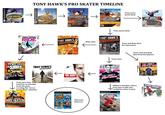

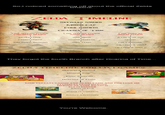

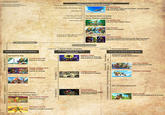











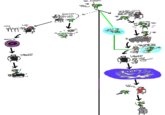

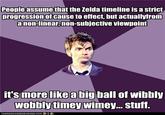


Comments ( 39 )
Sorry, but you must activate your account to post a comment.
Please check your email for your activation code.